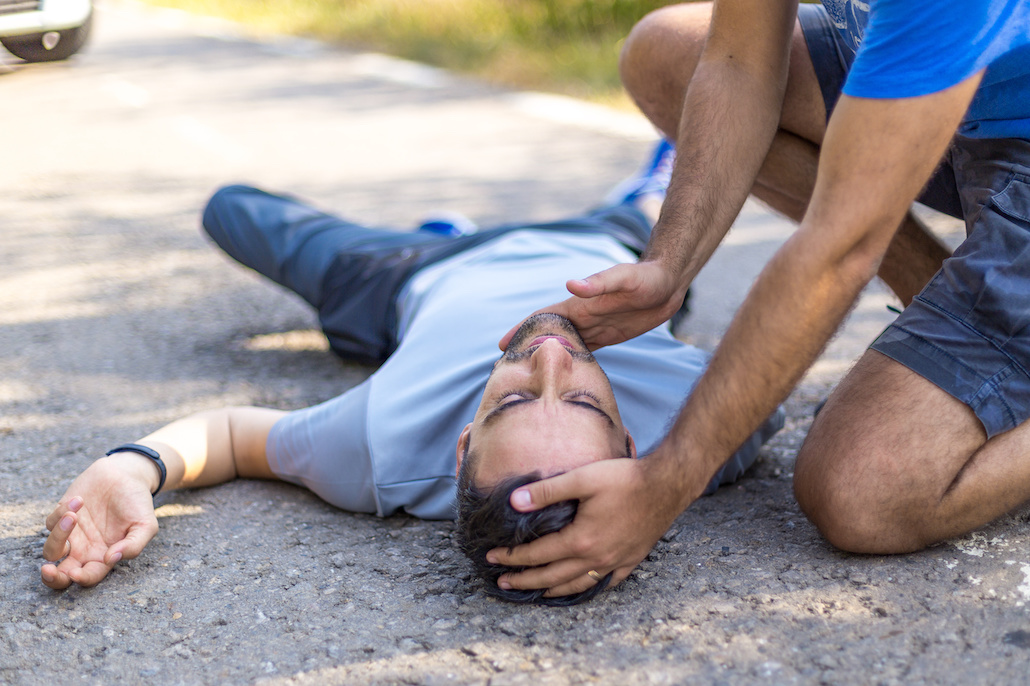It’s pretty well known that we here at The National Center for Outdoor & Adventure Education (NCOAE) are experts when it comes to training our students how to respond to medical emergencies in remote or wilderness settings. Less known is the fact that we also educate anyone interested in training that satisfies the eligibility requirements for the National Registry of Emergency Medical Technicians.
As a result, we teach our students to recognize that medical emergencies can happen anywhere and at any time. And it’s how we respond to those emergencies that makes all the difference in the world.
Below are tips in six categories — including safety, recognition, requesting help, patient communication, and being prepared — when handling a medical emergency.
Safety. Don’t be afraid to help, but don’t become part of the emergency. Use extreme caution near roadways or in hazardous environments. Take a few extra seconds to stop traffic or put on your life jacket.
Recognize that an emergency is happening. Whether you’re dealing with a friend or a stranger, if something seems wrong, ask if they are OK. When is something an “emergency?”
- Breathing: When someone is having trouble breathing, always consider it an emergency.
- Circulation: Many conditions, including heart attacks, can cause the heart to have difficulty pumping blood and can be rapidly fatal. Don’t wait, assume.
- Significant traumatic injuries: Falling from high places or being hit by a car are obvious examples of events that can cause significant injury. However, even if the person involved seems OK at first, assume there are unseen internal injuries.
- Neurologic problems: Any time the brain does not seem to be functioning correctly — even if it’s only mild confusion. Or if someone can’t use/feel one or more of their extremities. These are all emergency situations.
Call for help. This may be as simple as dialing 9-1-1 on your cell phone. In remote settings, this might involve using a radio or sending a runner for help. The sooner you call, the sooner help arrives. When you request help, be sure you know the following:
- Where you are. A street address, a mile marker and direction of travel on the highway, a trail head name, etc. The more specific you can be, the easier it is to find you. Remember, most cell phones have a GPS that you can use to figure out where you are if you are disoriented. If you had your “location” setting disabled, now’s the time to turn it on.
- What’s wrong. You don’t have to be a doctor, keep it simple. What is the patient complaining of? Chest pain? Trouble breathing? Being hit by a car?
- How bad is the patient right now? Are they awake and talking or completely unresponsive? Are they breathing at all? Do they have a pulse?
- How many patients are there? One person? A school bus full of people?
- Are there any special considerations that responders need to know? Is the patient at the bottom of a ravine? Trapped on an island? On the 10th floor of a construction site?
Remain on the line with emergency services. Don’t hang up. Patiently answer all questions. Answer the phone if they call you back. If they are calling back, it’s for a reason. They might be having trouble finding you.
- The 9-1-1 call taker may give you instructions on first aid interventions. Don’t be afraid, try your best. Know you are legally covered under Good Samaritan laws for good faith efforts to help.
Talk to your patient. Breathe and stay calm. Calm begets calm. Reassure them that more help is on the way.
Prepare for an emergency in order to gain confidence
- Attend a basic first aid class to learn and practice simple skills, such as how to control bleeding.
- Complete Wilderness First Responder (WFA) training or a Wilderness First Aid (WFA) training in order to gain more knowledge about responses in remote settings.
- Carry an emergency response bag in your car, or backpack with critical supplies such as disposable polymer gloves, tourniquets, and bandages.
Knowledge is the key to successful actions in a medical emergency, whether that be on the side of a city street or in a remote wilderness setting. Please check out our wilderness medical and emergency medical classes available here at NCOAE by visiting:
Wilderness Medical Training for outdoor educators and backcountry enthusiasts.
Emergency Medicine Training for ambulance medics, rescue and law enforcement personnel, lifeguards, ski patrol, athletic trainers, and recreational guides.
———
About the Author: Kate Javes is a North Carolina Level 1 Paramedic and EMT Instructor at The National Center for Outdoor & Adventure Education. A former two-sport NCAA Division I athlete at Rutgers University, Kate received her Bachelor of Science degree in math, and a second bachelor’s degree in History from the United States Naval Academy in Annapolis, Md.
TALK TO US
Have any further questions about our courses, what you’ll learn, or what else to expect? Contact us, we’re here to help!

Leave a comment